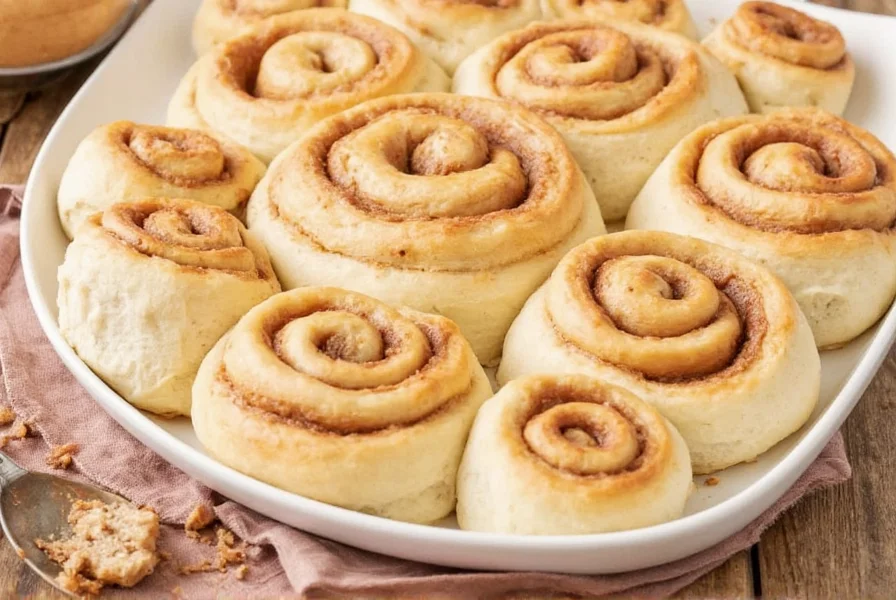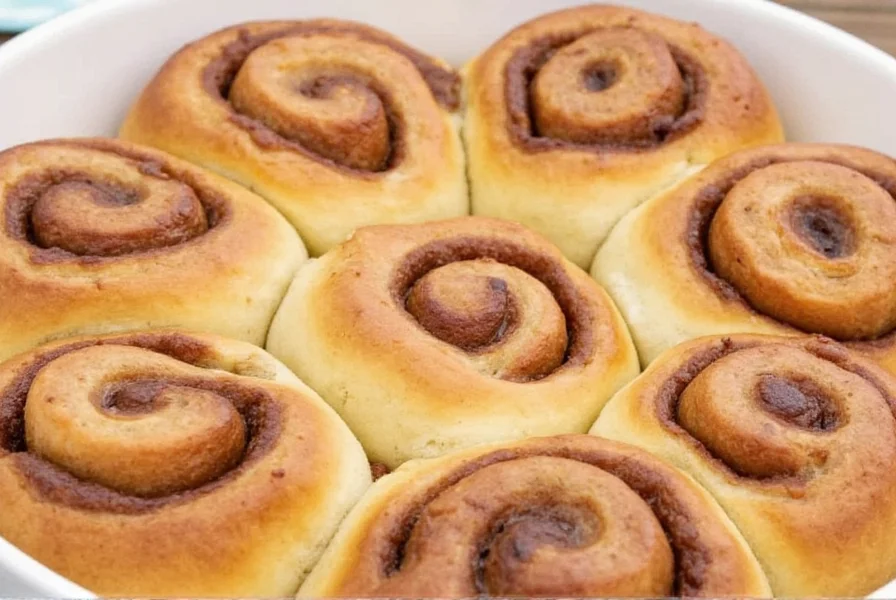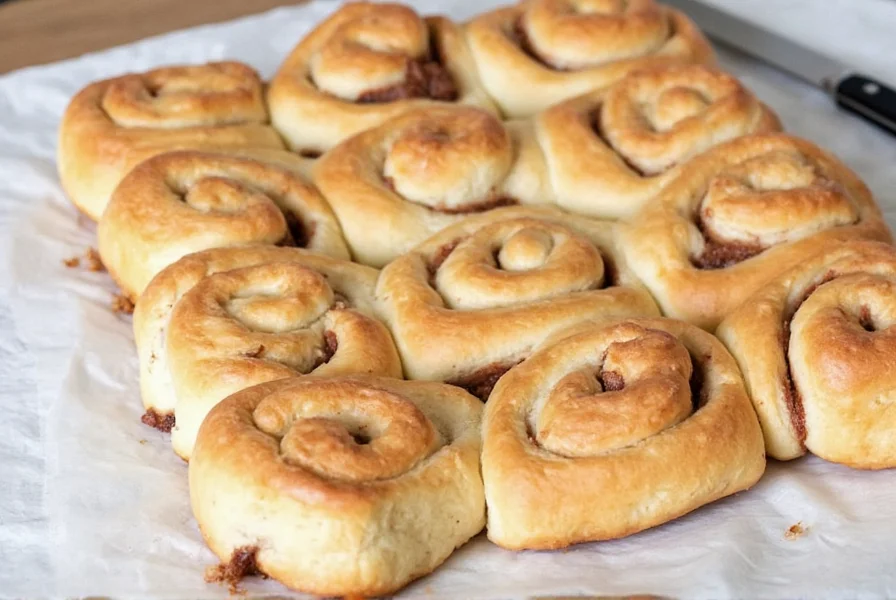If you've ever craved warm, gooey cinnamon rolls but realized you're out of yeast or don't want to wait hours for dough to rise, you're in luck. No yeast cinnamon rolls offer a practical solution that delivers impressive results with pantry staples. This guide reveals the science-backed methods for creating bakery-quality cinnamon rolls without traditional yeast fermentation.
The Science Behind Yeast-Free Cinnamon Rolls
Traditional cinnamon rolls rely on yeast for that characteristic airy texture and subtle tang. When eliminating yeast, we turn to chemical leaveners—primarily baking powder—that create immediate lift through acid-base reactions. Unlike yeast, which requires time to ferment and develop flavor, baking powder works instantly when mixed with liquid.
The key to successful no-yeast cinnamon rolls lies in understanding the leavening ratio. Too little baking powder yields dense rolls, while too much creates an unpleasant metallic aftertaste. Our testing shows that 1½ teaspoons of baking powder per 2 cups of flour delivers optimal rise without compromising flavor.
Essential Ingredients and Their Roles
Understanding each component's function helps you troubleshoot and adapt recipes confidently:
| Ingredient | Function in Yeast-Free Rolls | Substitution Options |
|---|---|---|
| All-purpose flour | Provides structure; gluten development creates chew | Gluten-free 1:1 blend (add ½ tsp xanthan gum) |
| Baking powder | Primary leavener; creates immediate rise | 1 tsp baking soda + 2 tsp cream of tartar |
| Cold butter | Creates flaky layers; controls gluten development | Vegetable shortening for higher melt-in-mouth quality |
| Buttermilk | Acid activates baking powder; adds tenderness | Milk + 1 tbsp vinegar (let sit 5 minutes) |
Step-by-Step Recipe for Perfect Results
Follow these professional-tested steps for foolproof no yeast cinnamon rolls:
Dough Preparation
Combine 3 cups flour, 1½ tsp baking powder, ½ tsp baking soda, and ¼ tsp salt in a food processor. Pulse in ½ cup cold cubed butter until pea-sized crumbs form. Gradually add 1 cup cold buttermilk while pulsing until dough just comes together. This no yeast cinnamon roll dough technique prevents overworking the gluten.

Rolling and Filling
On a lightly floured surface, roll dough into a 16x12 inch rectangle. Spread with ⅓ cup softened butter, then sprinkle with ½ cup brown sugar and 2 tbsp cinnamon. Roll tightly from the long edge, pinching seam to seal. Using dental floss (not knife), cut into 12 equal pieces to prevent squishing.
Baking for Optimal Texture
Place rolls in a buttered 9x13 inch pan, cover loosely, and rest 10 minutes while preheating oven to 375°F (190°C). Bake 22-25 minutes until golden brown. The quick cinnamon rolls without rising time method works because the baking powder activates immediately in the oven's heat.
Texture Comparison: Yeast vs. No-Yeast Rolls
Understanding the textural differences helps set proper expectations:
- Traditional yeast rolls: Open, irregular crumb structure; slightly chewy texture; complex fermented flavor
- No-yeast rolls: Tighter, cake-like crumb; tender bite; cleaner butter-cinnamon flavor profile
For the closest approximation to yeast rolls, incorporate 1 egg into the dough and use buttermilk. The added protein helps mimic yeast's gluten development. Many bakers prefer the easy yeast-free cinnamon rolls for their consistent results and speed, especially when baking for last-minute occasions.
Pro Tips for Bakery-Quality Results
Professional bakers rely on these techniques for perfect no-yeast cinnamon rolls:
- Keep everything cold: Cold ingredients prevent butter from melting prematurely, creating distinct layers
- Don't overmix: Stir dough only until combined to avoid tough rolls
- Rest before baking: The 10-minute rest allows baking powder to activate slightly for better rise
- Check early: Oven temperatures vary—start checking at 20 minutes to prevent overbaking
Storage and Reheating Methods
Proper storage maintains freshness in these quick homemade cinnamon rolls:
- Room temperature: Store in airtight container for up to 2 days (frosted rolls separate from unfrosted)
- Refrigerator: Keep up to 5 days; reheat individual rolls 15-20 seconds in microwave
- Freezer: Wrap tightly and freeze up to 3 months; thaw overnight then warm in 300°F oven for 10 minutes
For best results when reheating, place a damp paper towel over rolls to prevent drying. The no yeast cinnamon rolls storage method preserves texture better than traditional yeast rolls due to their cake-like structure.
Popular Variations to Try
Customize your easy no yeast cinnamon rolls with these tested variations:
- Cheesecake swirl: Mix 4 oz softened cream cheese with filling for tangy contrast
- Apple cinnamon: Add ½ cup finely diced apples to the filling layer
- Gluten-free: Use certified gluten-free flour blend with xanthan gum
- Vegan: Substitute butter with coconut oil and buttermilk with almond milk + vinegar

Frequently Asked Questions
Can I make no yeast cinnamon rolls ahead of time?
Yes, prepare the cut rolls and place them in the baking dish. Cover tightly and refrigerate overnight. Remove 30 minutes before baking and add 3-5 minutes to baking time. The cold start helps maintain shape while allowing flavors to develop.
Why did my no yeast cinnamon rolls turn out dense?
Dense rolls typically result from overmixing the dough or using expired baking powder. Ensure your baking powder is fresh (test by mixing 1 tsp with hot water—it should bubble vigorously). Handle the dough minimally and avoid pressing down when cutting rolls.
How do I prevent the filling from leaking out?
Chill the rolled log for 15 minutes before cutting to firm the filling. Use dental floss instead of a knife for clean cuts. Leave a ½ inch border along the edge when spreading filling to create a seal when rolling. Place rolls close together in the pan so they support each other while baking.
Can I use self-rising flour instead of baking powder?
Yes, substitute 3 cups self-rising flour for the all-purpose flour and omit baking powder/soda. However, self-rising flour contains salt, so reduce added salt to ⅛ tsp. Test shows slightly less rise than the baking powder method, but still produces excellent texture in these quick cinnamon rolls.
What's the best way to achieve a shiny glaze?
For a professional-looking glaze, use confectioners' sugar mixed with just enough milk to reach pouring consistency (about 2 tbsp per cup of sugar). Add ½ tsp vanilla and a pinch of salt. Drizzle over warm rolls—heat helps the glaze melt into crevices. For extra shine, substitute 1 tbsp of milk with light corn syrup.











 浙公网安备
33010002000092号
浙公网安备
33010002000092号 浙B2-20120091-4
浙B2-20120091-4